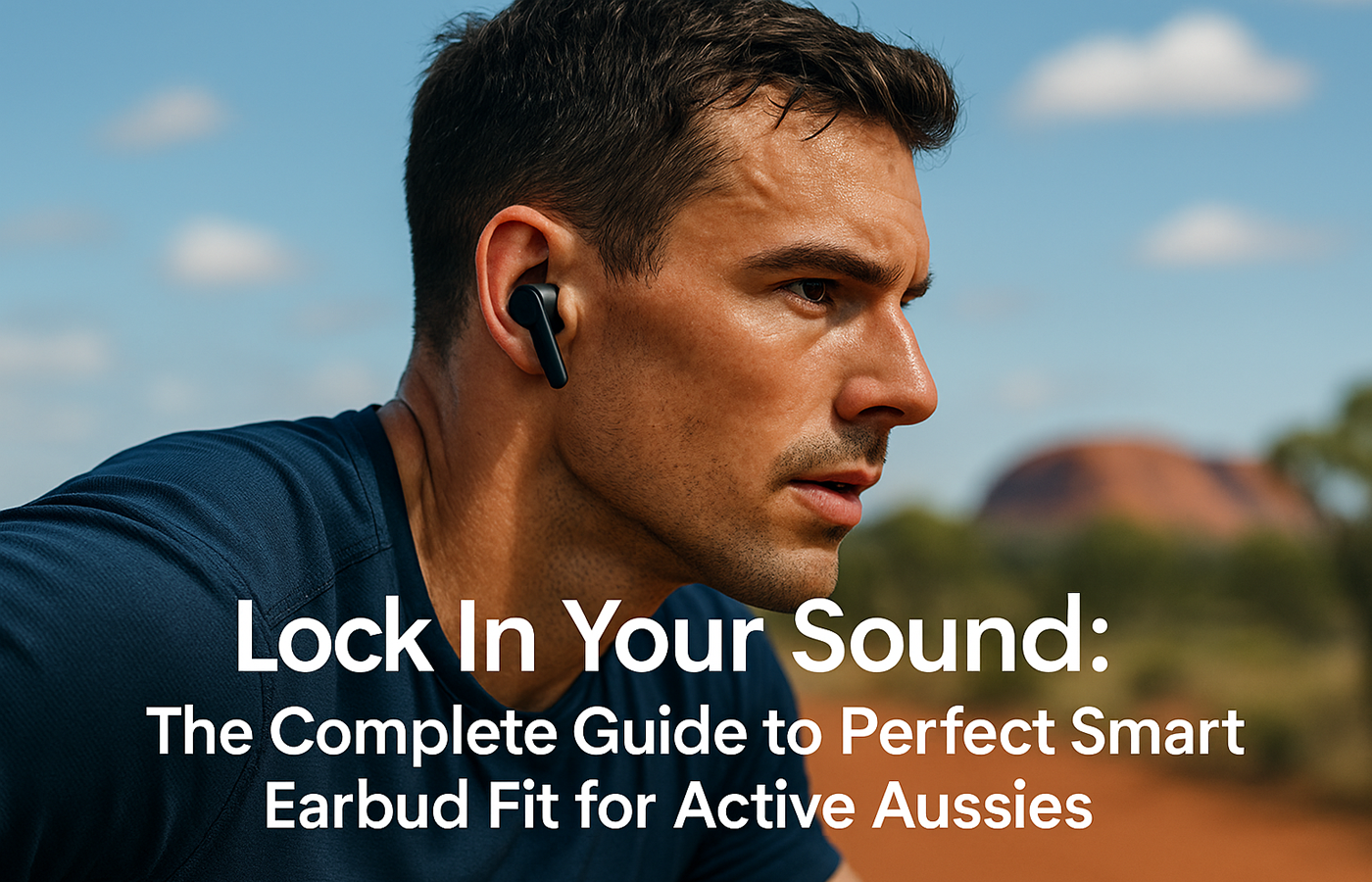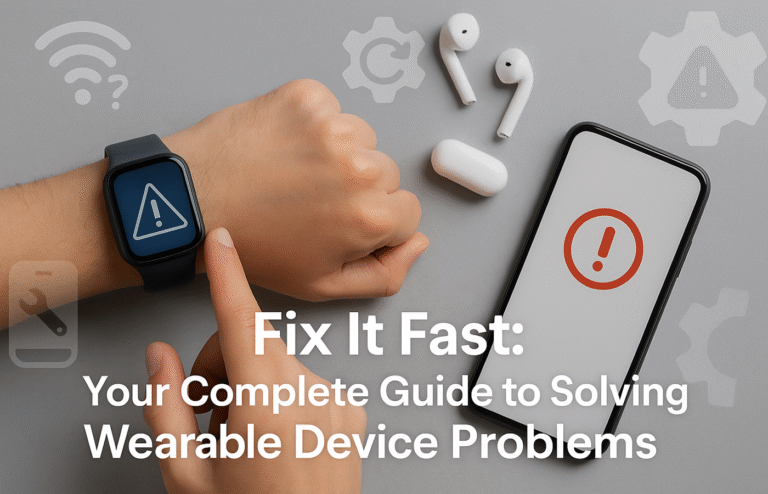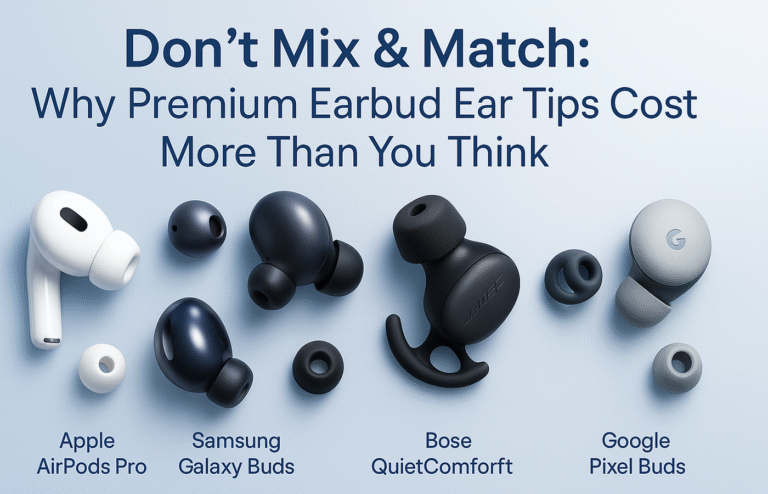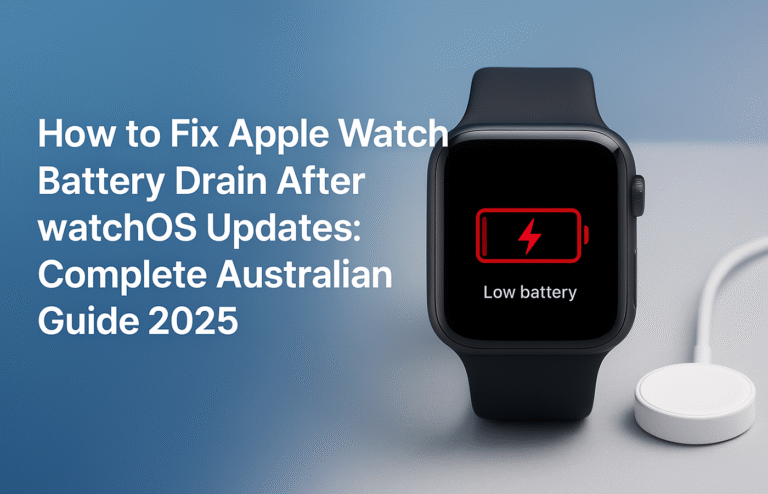Smart Earbuds Perfect Fit Guide: Essential Tips for Active Australians
Achieving perfect smart earbud fit requires understanding ear anatomy, proper accessory selection, and activity-specific techniques for Australia’s diverse climate and active lifestyle.
Essential Fit Elements:
● Ear tip selection: Silicone tips for durability and sweat resistance, foam tips for superior noise isolation
● Wing tips and stabilisers: Multiple sizes for varied activities like running, surfing, and gym workouts
● Proper insertion technique: Lift ear up and back, insert with twisting motion following natural ear curve
● Moisture management: Use antiperspirant, develop post-workout cleaning routines, consider backup tips
Activity-Specific Requirements:
● Running: Medium-to-large wing tips with moisture-wicking ear tips for vertical stability
● Water sports: Larger ear tips when wet, secure wing tips, retention cords essential
● Gym training: Low-profile designs for helmet and bench compatibility
Investment: Quality aftermarket accessories cost $20-50 AUD, with professional fitting services available in major cities.
Lock In Your Sound: The Complete Guide to Perfect Smart Earbud Fit for Active Aussies
Whether you’re pounding the pavement along Sydney Harbour, catching waves at Bondi, or smashing out a HIIT session in the gym, nothing kills your workout vibe quite like earbuds that won’t stay put. Finding the perfect fit for your smart earbuds isn’t just about comfort—it’s about maximising sound quality, ensuring they stay secure during intense activities, and getting the most from your investment.
Let’s dive into everything you need to know about achieving the perfect smart earbud fit for Australia’s active lifestyle.
Why Proper Fit Matters More Than You Think
Before we explore the how-to, it’s crucial to understand why proper fit is absolutely essential for smart earbuds. Unlike traditional headphones, smart earbuds pack sophisticated technology into a tiny package, making fit even more critical.
Sound Quality Depends on Seal: Smart earbuds rely on creating a proper acoustic seal in your ear canal. Without this seal, you’ll experience poor bass response, reduced noise cancellation effectiveness, and overall disappointing audio quality. This is particularly important when you’re exercising in noisy environments like busy streets or crowded gyms.
Staying Power During Activity: Australian summers are hot, and intense workouts mean sweat—lots of it. Poorly fitted earbuds will slip, shift, or fall out completely during activities, potentially damaging expensive devices or interrupting your training rhythm.
Health and Safety Considerations: Earbuds that don’t fit properly can cause discomfort, ear fatigue, or even pain during extended wear. Moreover, loose earbuds might require you to turn up the volume dangerously high to compensate for poor seal, potentially damaging your hearing.
Understanding Your Ear Anatomy
Every ear is unique, much like fingerprints. Understanding your ear’s specific characteristics will help you choose the right accessories and fitting approach.
Ear Canal Size and Shape: Most people have ear canals that aren’t perfectly round—they’re often oval-shaped and can vary in size throughout the canal. Additionally, your left and right ears might require different sized tips.
Concha Bowl Depth: The outer bowl of your ear (concha) affects how earbuds with stabilising wings or fins will sit. Shallow conchas might need smaller wings, while deeper ones can accommodate larger stabilising elements.
Ear Canal Angle: Your ear canal isn’t straight—it curves slightly. Quality earbuds are designed to follow this natural curve, but the angle varies between individuals, affecting which tip materials and shapes work best.
Mastering Ear Tip Selection
The ear tip is your first line of defence against poor fit. Getting this right sets the foundation for everything else.
Silicone vs Foam Tips: Silicone tips offer durability and easy cleaning—perfect for sweaty Australian workouts. They’re also quick to insert and remove. Foam tips, particularly memory foam varieties, provide superior noise isolation and often a more secure fit, but they require replacement more frequently and can retain moisture.
Size Progression Method: Don’t assume you need medium tips just because that’s what comes pre-installed. Try the smallest tips first, then gradually increase size until you find snug fit without discomfort. Many Australians find they need different sizes for each ear.
Shape Variations: Beyond size, consider tip shapes. Some brands offer oval tips for non-round ear canals, flanged tips for better seal, or angled tips that better match your ear canal’s natural curve.
Testing Your Seal: Here’s a simple test—with earbuds properly inserted, gently press them slightly deeper. If the sound quality improves significantly, your tips are too small. If pushing causes discomfort or no sound change, you’ve likely found your size.
Wing Tips and Stabilising Accessories
For active Australians, standard ear tips often aren’t enough. Wing tips and stabilising accessories provide the extra security needed for intense activities.
Understanding Wing Tip Design: Wing tips (also called fins or stabilisers) sit in your ear’s concha bowl, providing additional anchor points. They work by creating multiple contact points rather than relying solely on ear canal insertion.
Sizing Wing Tips: Wing tips should feel secure without causing pressure points. Too large, and they’ll create discomfort during extended wear. Too small, and they won’t provide adequate stabilisation. Most quality earbuds include multiple wing tip sizes—experiment to find your perfect match.
Activity-Specific Considerations: Running requires different stabilisation than surfing or weightlifting. Running creates repetitive vertical motion, surfing involves water and changing head positions, while gym work might include lying down or inverted positions. Consider having different wing tip setups for different activities.
Hybrid Solutions: Some earbuds offer interchangeable systems where you can mix ear tip sizes with wing tip sizes independently. This flexibility is particularly valuable for Australians with asymmetrical ears or those who engage in varied activities.
Insertion Technique and Positioning
Even the perfect accessories won’t help if your insertion technique is wrong. Proper insertion is a skill that improves with practice.
The Lift and Insert Method: Reach over your head with your opposite hand and gently pull your ear up and back. This straightens your ear canal, making insertion easier and more effective. Insert the earbud with a slight twisting motion, following your ear’s natural curve.
Finding the Sweet Spot: Proper insertion depth varies by individual and earbud design. You should feel secure contact without pressure or pain. The earbud should sit flush with your ear opening—if it’s protruding significantly, try smaller tips or adjust your insertion angle.
Left vs Right Differences: Don’t assume both ears are identical. Many people need different tip sizes or insertion depths for each ear. Take time to optimise each side independently.
Pre-Activity Check: Before starting your workout, do a quick shake test. Gently shake your head side to side and up and down. Well-fitted earbuds shouldn’t shift or feel loose during this movement.
Dealing with Sweat and Moisture
Australia’s climate and active lifestyle mean your earbuds will encounter moisture regularly. Proper fit helps, but additional strategies are essential.
Moisture-Wicking Accessories: Some ear tip materials are better at managing moisture than others. Look for tips with moisture-wicking properties or antimicrobial treatments. Silicone generally handles moisture better than foam, but high-quality foam tips with protective coatings are available.
Pre-Workout Preparation: Consider using antiperspirant around your ears (avoiding the ear canal) or moisture-absorbing powders designed for athletic use. Some athletes swear by a light application of petroleum jelly around the ear’s outer areas to prevent slipping.
Cleaning and Maintenance: Develop a post-workout cleaning routine. Remove earbuds immediately after exercise, clean with appropriate wipes or solutions, and allow complete drying before storage. This prevents buildup that can affect fit and hygiene.
Backup Options: For extended activities or multi-day adventures, consider having backup ear tips available. Moisture-saturated tips won’t provide optimal fit or hygiene.
Activity-Specific Fitting Strategies
Different Australian activities demand different approaches to earbud fitting and securing.
Running and Jogging: Focus on vertical stability and sweat management. Medium-to-large wing tips often work best, combined with moisture-wicking ear tips. Consider earbuds with ear hooks for additional security during long runs along Australia’s scenic coastal routes.
Surfing and Water Sports: Waterproof ratings are essential, but proper fit prevents water from forcing earbuds out. Slightly larger ear tips can help maintain seal when wet, and secure wing tips are non-negotiable. Always use retention cords in marine environments.
Gym and Weight Training: Variable head positions during exercises require secure, comfortable fit that won’t shift during bench press, deadlifts, or overhead movements. Focus on low-profile designs that won’t interfere with lying on benches or wearing headgear.
Cycling: Wind noise and helmet compatibility are key considerations. Proper ear tip seal reduces wind noise, while low-profile wing tips prevent interference with helmet straps.
Troubleshooting Common Fit Issues
Even with careful selection, you might encounter fit challenges. Here’s how to address common problems.
Earbuds Keep Falling Out: Usually indicates ear tips are too small, worn out, or you need additional stabilisation. Try larger tips first, then consider wing tips or ear hooks.
Discomfort During Extended Wear: Often caused by tips that are too large or earbuds inserted too deeply. Reduce tip size or adjust insertion depth. Sometimes switching from silicone to foam tips can reduce pressure points.
Poor Sound Quality: Usually relates to inadequate seal. Check for earwax buildup, try larger tips, or adjust insertion angle. Remember that proper seal is essential for bass response and noise cancellation.
Frequent Readjustment Needed: Suggests tips are wrong size or material, or you need additional stabilisation accessories. This is particularly common during the initial break-in period with new earbuds.
Recommended Accessories for Australian Conditions
While specific product recommendations change frequently, certain accessory categories consistently prove valuable for active Australians.
Premium Ear Tip Sets: Aftermarket ear tip sets often provide more size options and materials than manufacturer-supplied tips. Brands like Comply, Spinfit, and AZLA offer extensive compatibility and material choices. Expect to pay $20-50 AUD for quality aftermarket tips.
Retention Accessories: Ear hooks, security straps, and retention cords provide additional security for high-intensity activities or water sports. Prices typically range from $15-40 AUD for quality options.
Cleaning and Maintenance Kits: Specialised cleaning tools and solutions help maintain hygiene and optimal fit. Budget $10-25 AUD for comprehensive cleaning kits designed for smart earbuds.
Carrying and Storage Solutions: Proper storage prevents damage and contamination that can affect fit. Quality cases with organisation features typically cost $15-35 AUD.
Professional Fitting Services
For those struggling with fit despite trying various options, professional services are available across Australia’s major cities.
Audiologist Consultations: Many audiologists now offer smart earbud fitting services, particularly valuable if you have unusual ear anatomy or hearing considerations.
Custom Ear Impressions: Some premium brands offer custom ear tips made from impressions of your ears. While expensive ($100-300 AUD), these provide unmatched fit and comfort for serious athletes or professional users.
Specialty Retail Services: Many electronics retailers now offer fitting services and extensive accessory try-before-you-buy programs, particularly helpful when investing in premium smart earbuds.
Maintaining Your Perfect Fit
Once you’ve achieved the perfect fit, maintaining it requires ongoing attention.
Regular Replacement Schedule: Ear tips wear out, typically requiring replacement every 3-6 months with regular use. Set calendar reminders to check and replace worn accessories.
Seasonal Adjustments: Australia’s varied climate might require seasonal adjustments. Ear swelling during hot weather or dryness during winter can affect fit requirements.
Activity Rotation: If you engage in varied activities, consider having activity-specific setups rather than trying to find one-size-fits-all solutions.
Conclusion
Achieving the perfect smart earbud fit for Australia’s active lifestyle requires patience, experimentation, and often investment in quality accessories. However, the payoff—secure, comfortable earbuds that deliver excellent sound quality during any activity—makes the effort worthwhile.
Remember that finding your perfect fit is a process, not a destination. As your activities change, your ear anatomy subtly evolves, and new products become available, be prepared to reassess and adjust your setup.
Start with proper ear tip selection, add stabilising accessories as needed, master your insertion technique, and don’t forget about maintenance. With these fundamentals in place, you’ll be ready to tackle any Australian adventure with confidence that your smart earbuds will stay put and perform brilliantly.
Your ears—and your workout playlist—will thank you for the investment in getting the fit just right.








